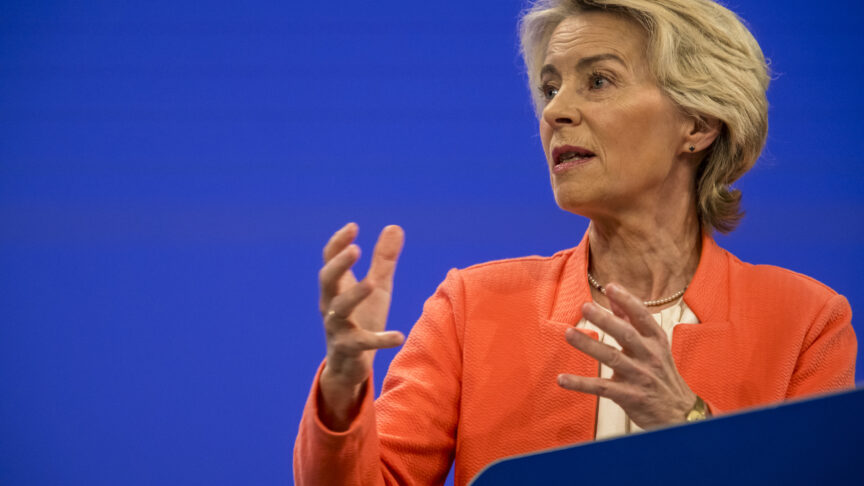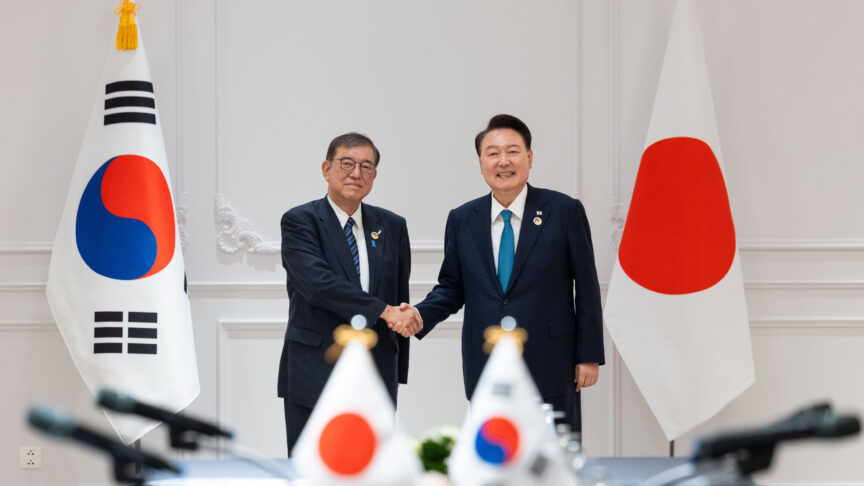Big in Asia: Behind the rhetoric of EU relations with China and Japan
The last ten days have been big for the EU and its partners in Asia, namely China and Japan. With EU-China and EU-Japan summits resulting in historic agreements, the EU is slowly strengthening its relationships with allies to the east.
“Events, dear boy, events”, runs the apocryphal saying attributed to a British prime minister. As an explanation of the difficulties leaders face, the phrase might equally apply to the unfolding results of the European Union’s recent summits with China and Japan. The meeting in Tokyo was supposed to happen before the one in Beijing – making a political point about who is the EU’s first choice of partner. But, after a deadly flood in Japan forced Prime Minister Shinzo Abe to delay the meeting, Beijing became the EU’s first stop.
And who would have anticipated that, on the eve of the EU-China summit, US President Donald Trump would designate the EU “a foe” and find excuses for China’s international trade practices? The aberrant remark – which only amplifies earlier statements – seems designed to bring Europe closer to China.
Indeed, this is exactly what happened – as reflected in the two sides’ lengthy joint communiqué. After two years of drought during which they issued no communiqué, the good times are back. The document includes more than 30 apparent points of convergence. Since these affairs are judged on semantics and in comparison to similar past statements, one feels obliged to mention that the EU did not include the word “reciprocity” this time around, while China re-emphasised “comprehensive strategic partnership”. None of the usual subjects of discord were raised as such – be it market economy status, investment screening, the South China Sea, or human rights (except to mention “cooperation” on the last issue).
However, the points of convergence are striking in their vagueness and projection into the future. One is the reform of the WTO: a great idea that stems from the fact that this international institution is especially beneficial for China. Another is a renewed commitment to speed up the two sides’ bilateral investment treaty – a promise that has been made over and over again. It remains to be seen how they will implement their agreement, reached last year, on guarantees of geographical indications (the equivalent of trademarks for food and wine). China’s signing of an international government procurement deal begs the question: “on what terms?”. The EU gives a pass – really, a satisfecit – to China’s recent measures that liberalise foreign investment, and those on the protection of intellectual property (on the latter, this stance wholly contradicts the EU’s joint effort with Japan and the United States to protect critical advanced technologies from China’s acquisition practices). On human rights, the recent liberation of Liu Xia is a belated but welcome development – but perhaps at odds with all other prevailing policies.
The communiqué can seem mainly designed to rattle the US administration. But it is unclear whether Trump is impressed by diplomatic literature. Nonetheless, the EU made no concessions. It merely repeated its mantra on territorial sovereignty and international law while promoting the three pillars of the United Nations (including human rights, which China has no love for).
Another reality check for the agreement followed in Tokyo, where the EU signed the long-awaited Economic Partnership Agreement (EPA) and a Strategic Partnership Agreement. Had it not been for the advent of the Trump administration, Japan would still be prioritising the Trans-Pacific Partnership and trade relations with Washington.
A decade in the making, the EPA is as precise as the EU-China communiqué is vague. The substance of this detailed, meaty agreement is in creating the world’s largest free-trade area – a huge restraining hand on the current trend towards curbing open trade and resorting to protectionist blackmail. The EPA includes no agreement on investment – as European opinion has turned against private international arbitration of investment disputes – nor a deal on rice, which would be taboo for the Japanese. But it covers most other areas, and as such will have substantial benefits for European and Japanese consumers. This is a rock-solid regulatory foundation for free trade in an area that encompasses much of the global economy.
Just as telling is the Strategic Partnership Agreement. The deal spells out, sector by sector, areas of joint action including the fight against “weapons of mass destruction and their means of delivery”, peaceful resolution of territorial disputes, crisis management, and dozens of more mundane topics. Importantly, a Joint Committee will ensure the agreement is implemented using a set dispute-resolution mechanism.
The Trump show, a fascination with China’s public diplomacy, and Europeans’ sense of crisis and doubts about their influence all drove the tactical EU-China summit. Despite its lack of substance, the communiqué will grab the attention of many media outlets. By comparison, the clear and effective agreements between the EU and Japan will get almost no press. Yet, in the long term, they will matter far more than another convoluted attempt to find common ground with China. Transatlantic relations will survive Trump, and the EU can disagree with China without becoming locked in permanent conflict with it. If the EU is looking for a partner to fight the current global headwinds, its relationship with Japan seems a good place to start.
The European Council on Foreign Relations does not take collective positions. ECFR publications only represent the views of their individual authors.


